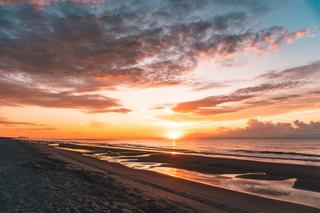📅
•⏱️ 5 min read
David Rodriguez
Lifeguard & Fire FighterYou can find jetties and piers at many beaches across the country. Both piers and jetties can offer a lot to a beach but can also be quite dangerous. The longest piers in the United States are the Apache Pier in Myrtle Beach on the East Coast and the Oceanside pier on the West Coast. They are 1,206 and 1,954 feet respectively. Piers are often constructed of wood and concrete. There are large pillars or pilings that help secure the pier to the ocean floor which holds a pier in place. The longest rock jetty in the United States is found in Galveston at approximately 35,587 feet long.
Piers are used for people to walk on and access offshore areas. Typically you can access boats from piers, fish from piers, and even businesses operate on piers. Lifeguard towers can also be found on some piers and these piers give a great elevated vantage point to see more of the beach and swimmers. Jetties are structures that usually start from the land and go out to the ocean as well. They help provide safe and calm waters for boat access, they can form channels, and also protect the shoreline and act as a barrier against erosion from the ocean.
There are many dangers associated with piers and jetties. Oftentimes there are rip currents that are formed around these piers and jetties. The ocean moves along these structures every day. Typically the area on either side of jetties or underneath piers is deeper due to sand movement and hole structure. Rip currents form very easily along these structures which can pull people out to sea or into these structures. Side current depending on swell direction can pull you quickly into the pier or rocks which can cause traumatic injuries. Waves around piers and jetties are very dangerous as they can throw you into pilings and rocks. Fishing lines and other objects can get caught in these rocks and pilings and any array of things like fishing hooks, trash, and other objects could injure or trap you if they are present. People will also walk out or fish on jetties and depending on swell and tide, you may get trapped on these rocks if you are not timing the low tide correctly. Rocks may become slippery from algae growing on top which is typically indicated by a green color. Avoid stepping on these areas. Wearing booties or water shoes may protect yourself from sharp edges.
Avoid swimming, wading, or surfing around piers and jetties. If you get caught near a pier in a side current or rip current, do your best to stay calm and swim with the current away from the pier or through the pier and not fight the current. If you have a flotation device (like a boogie board or surf board), don't abandon it! Not only will it keep you floating, but you may be able to use it to shield yourself from the rocks or pilings to avoid injury. Call for help and make yourself seen as best as possible to the lifeguards. Waving an object like a boogie board or surfboard in the air may also show your location. As always, Never turn your back to the ocean. Watch for incoming tides, swells, and rogue waves.
Make sure to always ask a lifeguard where the best place is to enter the ocean. Stay safe and enjoy your safe beach day! Check out other articles here to keep yourself safe at the beach!
